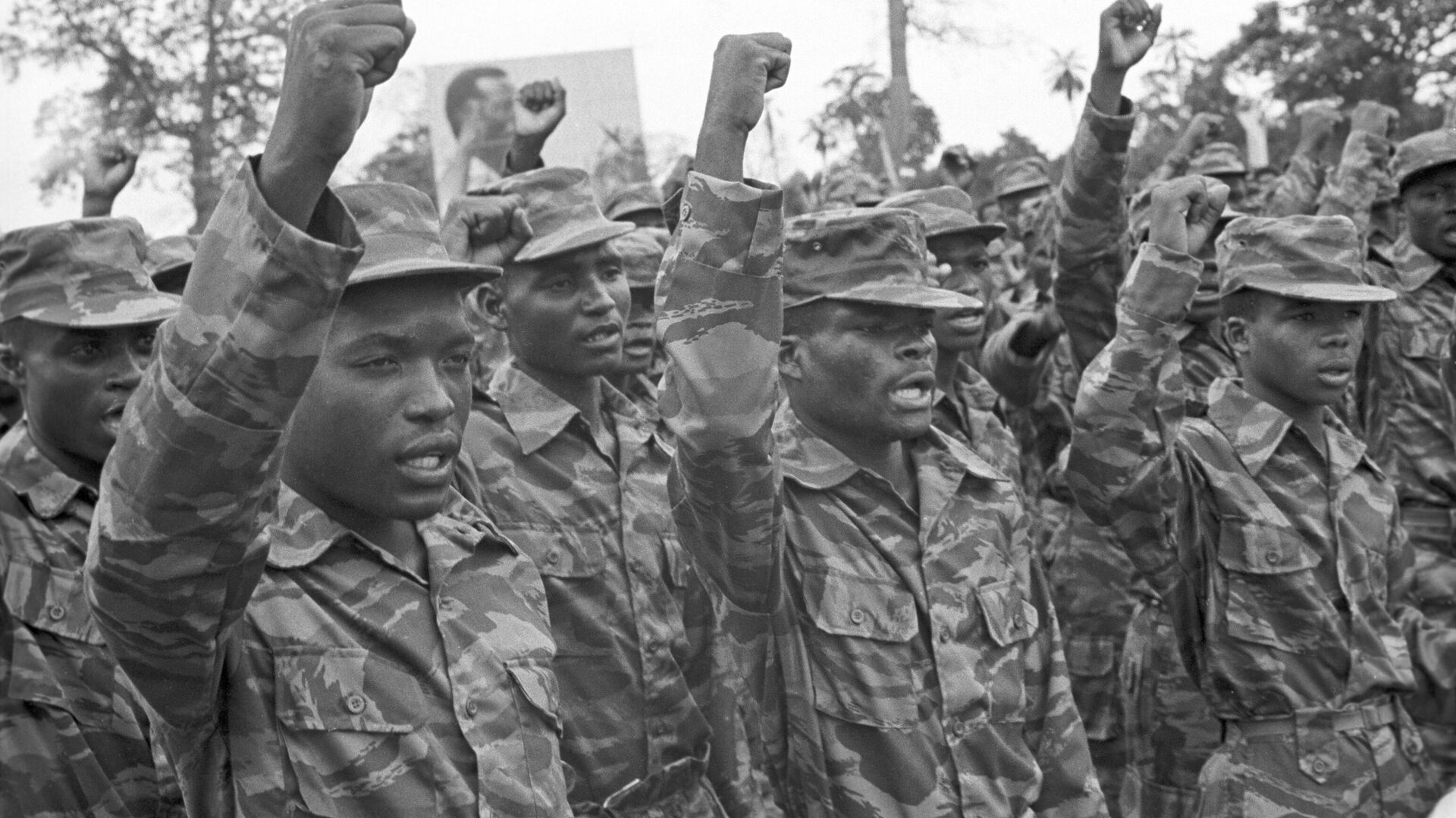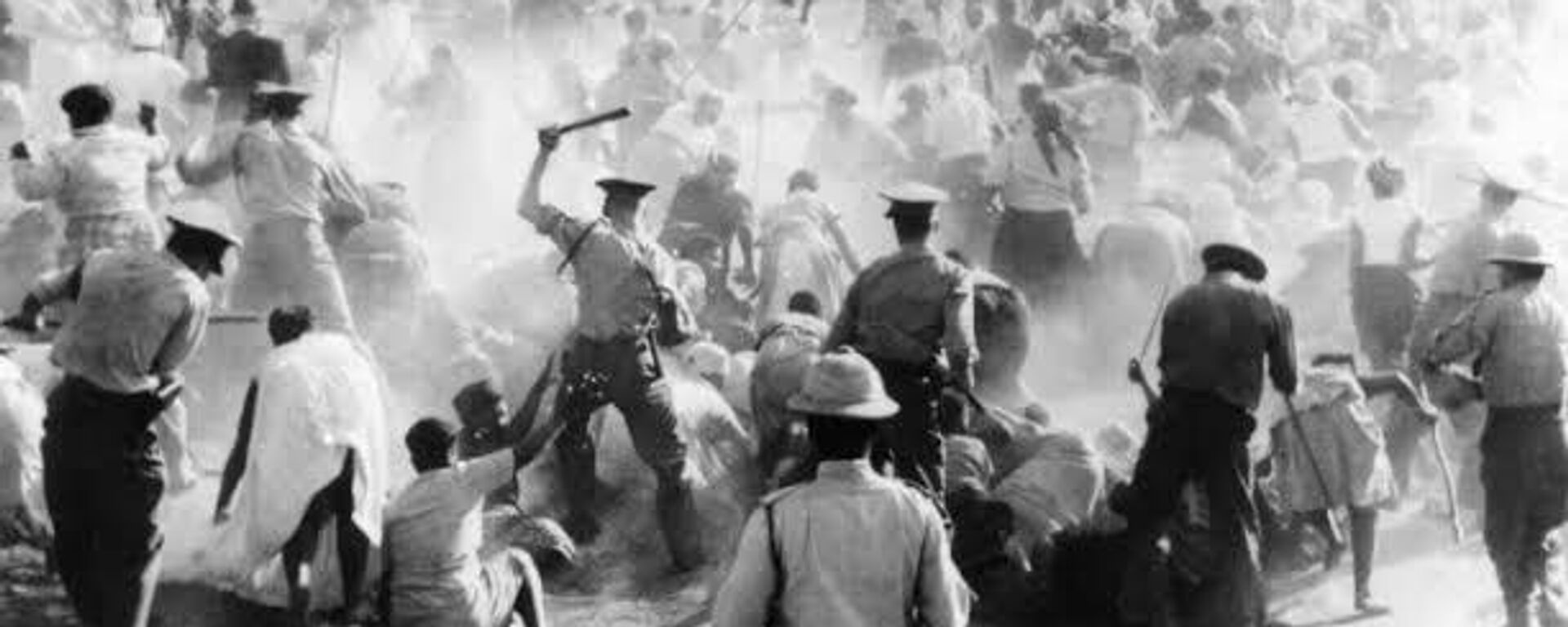https://en.sputniknews.africa/20240324/southern-africa-liberation-day-remembering-struggle-for-freedom-against-racism-1065727423.html
Southern Africa Liberation Day: Remembering Struggle for Freedom Against Racism
Southern Africa Liberation Day: Remembering Struggle for Freedom Against Racism
Sputnik Africa
On March 23, 1988, Angolan armed forces defeated the rebels of the National Union for the Total Independence of Angola (UNITA) and the troops of racist South... 24.03.2024, Sputnik Africa
2024-03-24T11:21+0100
2024-03-24T11:21+0100
2024-03-24T12:10+0100
southern africa
colonialism
angola
south africa
namibia
politics
war
racism
anti-apartheid struggle
national holiday
https://cdn1.img.sputniknews.africa/img/07e8/03/18/1065739112_0:156:3087:1892_1920x0_80_0_0_2b53f36d9a953862e0c324c58eb1226e.jpg
In honor of this significant date in the history of Angola and the Southern Africa region as a whole, in August 2018, the Southern African Development Community, at its 38th Summit in Windhoek, Namibia, established the celebration of Southern Africa Liberation Day on March 23.Sputnik Africa recalls the main historical events associated with the struggle of this part of the continent for its independence and freedom.Civil War in AngolaImmediately after Angola gained independence from Portugal in 1975, a conflict began in the country between the country's three leading military-political forces. The socialist government of the People's Movement for the Liberation of Angola (MPLA) was opposed by nationalist anti-communist forces — the National Liberation Front of Angola (FNLA) and the National Union for the Total Independence of Angola (UNITA).To support the formations of the FNLA and UNITA, troops from Zaire (now DR Congo) and South Africa invaded the country, and the United States provided military-technical and financial assistance to UNITA. In turn, the MPLA government received material and military support from Cuba and the USSR. Therefore, the civil war in Angola is considered one of the fronts of the Cold War.Moreover, other states that were systematically subjected to military aggression by South Africa were also drawn into this conflict — Botswana, Namibia (it was de facto occupied by South Africa in 1945-1990), Mozambique, Zimbabwe, etc.'Africa's Stalingrad': The Battle of Cuito Cuanavale and Its SignificanceIn 1987, Angolan government forces, with the participation of the Cubans, launched a large-scale offensive against rebel positions in the southeast of the country. Their target was the cities of Mavinga and Jamba — two main UNITA bases. However, South African troops stopped their advance and launched a counter-offensive.The main battles took place around Cuito Cuanavale, a small settlement with a military airfield at the confluence of the Cuito and Cuanavale rivers. Here, from August 14, 1987 to March 23, 1988, Angolan government troops, with the support of Cuban units and Soviet military specialists, held back the onslaught of South African troops and UNITA rebels. The battle, sometimes called "Africa's Stalingrad", was the largest in Africa since World War II, according to the book 7 Battles That Shaped South Africa. About 70,000 fighters took part in it on both sides, with the death toll estimated at 8,000.Although neither side achieved a decisive advantage, Cuito Cuanavale is considered the turning point of the Angolan civil war. In the summer of 1988, all parties agreed to a ceasefire, and in December, representatives of the governments of Angola, Cuba and South Africa, through US mediation, signed an agreement in New York to end the direct participation of foreign troops in the civil war in Angola.This battle also contributed to the liberation of Namibia from South African occupation and the beginning of democratic reforms in South Africa.
https://en.sputniknews.africa/20240321/64-years-since-sharpeville-massacre-south-africa-celebrates-human-rights-day-1065667485.html
southern africa
angola
south africa
namibia
botswana
mozambique
zimbabwe
Sputnik Africa
feedback@sputniknews.com
+74956456601
MIA „Rossiya Segodnya“
2024
Christina Glazkova
https://cdn1.img.sputniknews.africa/img/07e7/0b/07/1063380906_0:0:673:674_100x100_80_0_0_79628b4d0cd9f29291a57aa13bbf9e7a.jpg
Christina Glazkova
https://cdn1.img.sputniknews.africa/img/07e7/0b/07/1063380906_0:0:673:674_100x100_80_0_0_79628b4d0cd9f29291a57aa13bbf9e7a.jpg
News
en_EN
Sputnik Africa
feedback@sputniknews.com
+74956456601
MIA „Rossiya Segodnya“
Sputnik Africa
feedback@sputniknews.com
+74956456601
MIA „Rossiya Segodnya“
Christina Glazkova
https://cdn1.img.sputniknews.africa/img/07e7/0b/07/1063380906_0:0:673:674_100x100_80_0_0_79628b4d0cd9f29291a57aa13bbf9e7a.jpg
southern africa, colonialism, angola, south africa, namibia, politics, war, racism, anti-apartheid struggle, national holiday, independence, botswana, mozambique, zimbabwe
southern africa, colonialism, angola, south africa, namibia, politics, war, racism, anti-apartheid struggle, national holiday, independence, botswana, mozambique, zimbabwe
Southern Africa Liberation Day: Remembering Struggle for Freedom Against Racism
11:21 24.03.2024 (Updated: 12:10 24.03.2024) Christina Glazkova
Writer / Editor
On March 23, 1988, Angolan armed forces defeated the rebels of the National Union for the Total Independence of Angola (UNITA) and the troops of racist South Africa in the Battle of Cuito Cuanavale. 30 years later, the Angolan parliament recognized the anniversary of this battle as a national holiday.
In honor of this significant date in the history of Angola and the Southern Africa region as a whole, in August 2018, the Southern African Development Community, at its 38th Summit in Windhoek, Namibia, established the celebration of Southern Africa Liberation Day on March 23.
Sputnik Africa recalls the main historical events associated with the struggle of this part of the continent for its independence and freedom.
Immediately after Angola
gained independence from Portugal in 1975, a conflict began in the country between the country's three leading military-political forces. The
socialist government of the People's Movement for the Liberation of Angola (MPLA) was opposed by
nationalist anti-communist forces —
the National Liberation Front of Angola (FNLA) and
the National Union for the Total Independence of Angola (UNITA).
To support the formations of the FNLA and UNITA, troops from Zaire (now
DR Congo) and South Africa invaded the country, and the United States provided military-technical and financial assistance to UNITA. In turn, the MPLA government received material and military support from Cuba and the USSR. Therefore,
the civil war in Angola is considered one of the fronts of the Cold War.
Moreover, other states that were systematically subjected to military aggression by South Africa were also drawn into this conflict — Botswana,
Namibia (it was de facto occupied by South Africa in 1945-1990), Mozambique, Zimbabwe, etc.
'Africa's Stalingrad': The Battle of Cuito Cuanavale and Its Significance
In 1987,
Angolan government forces, with the participation of the Cubans, launched a large-scale offensive against rebel positions in the southeast of the country. Their target was the cities of Mavinga and Jamba — two main UNITA bases. However, South African troops stopped their advance and launched a counter-offensive.
The main battles took place around Cuito Cuanavale, a small settlement with a military airfield at the confluence of the Cuito and Cuanavale rivers. Here, from August 14, 1987 to March 23, 1988, Angolan government troops, with the support of Cuban units and Soviet military specialists, held back the onslaught of South African troops and UNITA rebels. The
battle, sometimes called "
Africa's Stalingrad", was the
largest in Africa since World War II, according to the book
7 Battles That Shaped South Africa. About 70,000 fighters took part in it on both sides, with the death toll estimated at 8,000.
Although neither side achieved a decisive advantage, Cuito Cuanavale is considered the turning point of the Angolan civil war. In the summer of 1988, all parties agreed to a ceasefire, and in December, representatives of the governments of Angola, Cuba and South Africa, through US mediation, signed an agreement in New York to end the direct participation of foreign troops in the civil war in Angola.
This battle also contributed to the
liberation of Namibia from South African occupation and the beginning of democratic reforms in South Africa.



